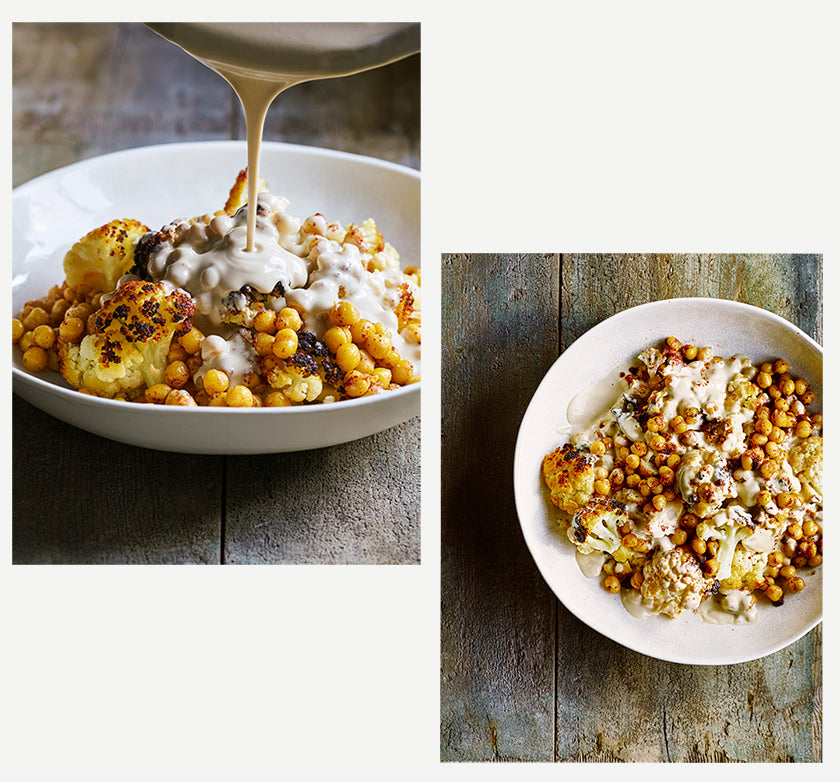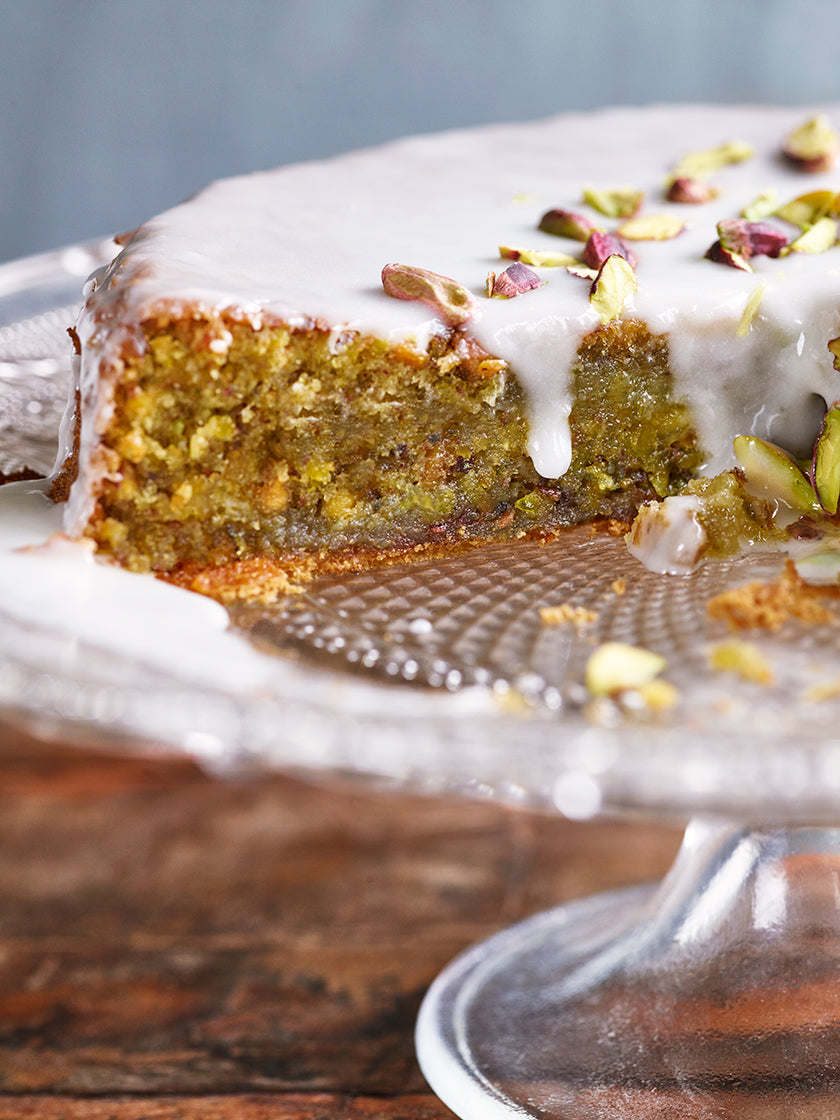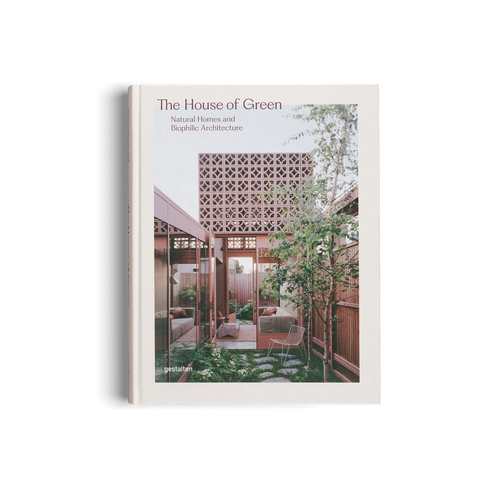
05/2020 food & beverages travel
Olive oil, lemon, garlic, cured meat, lamb, tahini, and local herbs and spices stand as major symbols of Palestine and Israel’s burgeoning culinary language. The biblical fruits of the Seven Species—wheat, barley, grapes, olives, figs, dates, and pomegranates—drove a thriving economy in ancient times and still star in modern local menus.
Joining them is a selection of Mediterranean fish, seafood, and fresh vegetables which are grown through traditional farming or sophisticated industrial agriculture. No meal—breakfast, lunch, or dinner—comes without a selection of colorful vegetables, chopped raw into a salad or served alongside, seared on the grill, or lightly steamed. Ingredients are never concealed by dense broths or complex sauces, but rather accentuated with olive oil, Yogurt, smen (salted fermented butter), or tomatoes.
From a cauliflower salad to a pistachio cake, with a roasted fish in between to break up courses, master the art of a three-course banquet using recipes from Divine Food.

(Photo: Dan Perez, assistance by Nicky Trok, styling by Nurit Kariv. Divine Food)
Roasted Cauliflower And Chickpea Salad
Serves 4
Cauliflower is one of those beautiful ingredients utterly transformed by heat. Raw it is nothing special; once roasted in the oven its flavor mellows, its florets crisp up, and it achieves something close to perfection. Fried or roasted cauliflower with tahini is common in Palestinian cuisine, here joined by cooked chickpeas with their earthy flavor and soft texture.
Preparations
One day in advance: Thoroughly wash the chickpeas, place them in a large bowl, cover with water, and add the baking soda. Leave to soak overnight.
One the day: Drain the chickpeas, place in a saucepan, and add water to cover. Bring to a boil on high heat, then reduce the heat and let simmer for 11/2 hours, or until chickpeas are very soft. Set aside.
Fill another saucepan with water, add the coarse salt, and bring to a boil. Add the heads of cauliflower and cook over high heat for 8 minutes. Preheat oven to 480°F (250°C). Line a roasting tray with greaseproof paper. Remove the cauliflowers with a slotted spoon and place them on the prepared tray. Pour the olive oil over them and sprinkle with fine salt. Roast for 25 minutes, or until parts of the cauliflower have turned golden brown. In a small bowl, mix the raw tahini paste, water, lemon juice, and fine salt until smooth.
Remove cauliflowers from the oven, cut into 3/4-in.-thick (2-cm-thick) slices, and place in a bowl. Gently mix together drained chickpeas, roasted cauliflower slices, and half the tahini sauce, and arrange in a serving bowl. Pour the rest of the tahini on top, add a tablespoon of olive oil, and serve.
Ingredients:
1/2 cup (100g) dried chickpeas 1 tsp. baking soda, 2 tsp. coarse salt, 2 small heads of cauliflower, 4 tbsp. extra virgin olive oil, plus more for serving, 1/4 tsp. fine salt, 1/3 cup (80ml) raw tahini paste 1/2 cup (120ml) cold water Juice of 1/2 lemon

(Photo: Dan Perez, assistance by Nicky Trok, styling by Nurit Kariv. Divine Food)
Roasted Red Mullet
Serves 4
Fried or roasted red mullet with olive oil and tomatoes and paired with a shot of arak encapsulates the flavors of the Mediterranean. Red mullet dishes can be traced back to the free Jews of the Italian city of Livorno, who cooked them with whatever was available, or even back to ancient Rome, where this delicate, light pink fish was especially prized.
Preparations
Preheat oven to 480°F (250°C). Arrange tomatoes, leeks, and garlic in a flat, oven-safe skillet. Drizzle 2 tsp. of olive oil over the vegetables and season with 1/2 tsp. of salt. Roast for 12 minutes. Place the pieces of mullet on the vegetables. Scatter the thyme sprigs and the rest of the oil and salt on top and roast for another 8 minutes. Squeeze the lemon over the skillet and serve immediately.
Ingredients:
1 cup cherry tomatoes, halved 1 leek, sliced into thin rings, 4 garlic cloves, thinly sliced, 4 tbsp. extra virgin olive oil, 1 tsp. coarse salt, 13/4 lb. (800 g) fresh red mullet: each piece weighing about, 1/4 lb. (100 –120 g) 8 sprigs fresh thyme 1 lemon, for serving

(Photo: Dan Perez, assistance by Nicky Trok, styling by Nurit Kariv. Divine Food)
Pistachio Cake
A moist, versatile dessert that is easy to make but still pretty enough to serve as an appropriate ending to a feast, this cake is part of a Middle Eastern tradition. It combines the nutty flavor of pistachios with the zesty freshness of lemon glaze but could work just as well with a dash of rosewater or with candied oranges in syrup instead of lemon glaze.
Preparations
Preheat oven to 340°F (170°C). Line the bottom of a baking pan with a circle of baking paper, 10 in. (26 cm) in diameter. In a stand mixer, whip the eggs at high speed until foamy. Alternatively, beat the eggs in a tall-sided bowl with a hand-held mixer. Continue whipping, gradually adding the sugar until fully incorporated. Add the melted butter gradually.
Put the mixer on low speed and add the flour, baking powder, pistachios, lemon zest, and almond extract. Pour the mixture into the pan and bake for 35 minutes. Remove the cake from the oven, cover with a clean dishtowel, and let cool for 40 minutes.
Invert the cake onto a serving dish and carefully remove the baking paper. Mix powdered sugar and lemon juice in a small bowl until the mixture is white, smooth, and uniform. Pour over the cake and allow it to cool. The cake can be served immediately or stored for up to 3 days in an airtight container.
Good to know You can bake this in a 10-in. (26-cm) round baking tin or springform pan. If you are using the springform, you can simply place a square of baking paper at the bottom of the springform and then clamp the round sprung collar down over it.
Ingredients:
5 medium eggs, 41/4oz. (120g) sugar, 7oz. (200g) unsalted butter melted, 13/4oz. (50g) white flour, 1/2 tsp. baking powder, 7oz. (200g) ground pistachios 1/2 tsp. lemon zest, 4 drops almond extract
Frosting 31/2 oz. (100 g) powdered sugar 1 tbsp. freshly squeezed lemon juice
From shakshuka to challah to baklava, Divine Food takes you into the regional recipes of Palestine and Isreal. Available in German and English.













